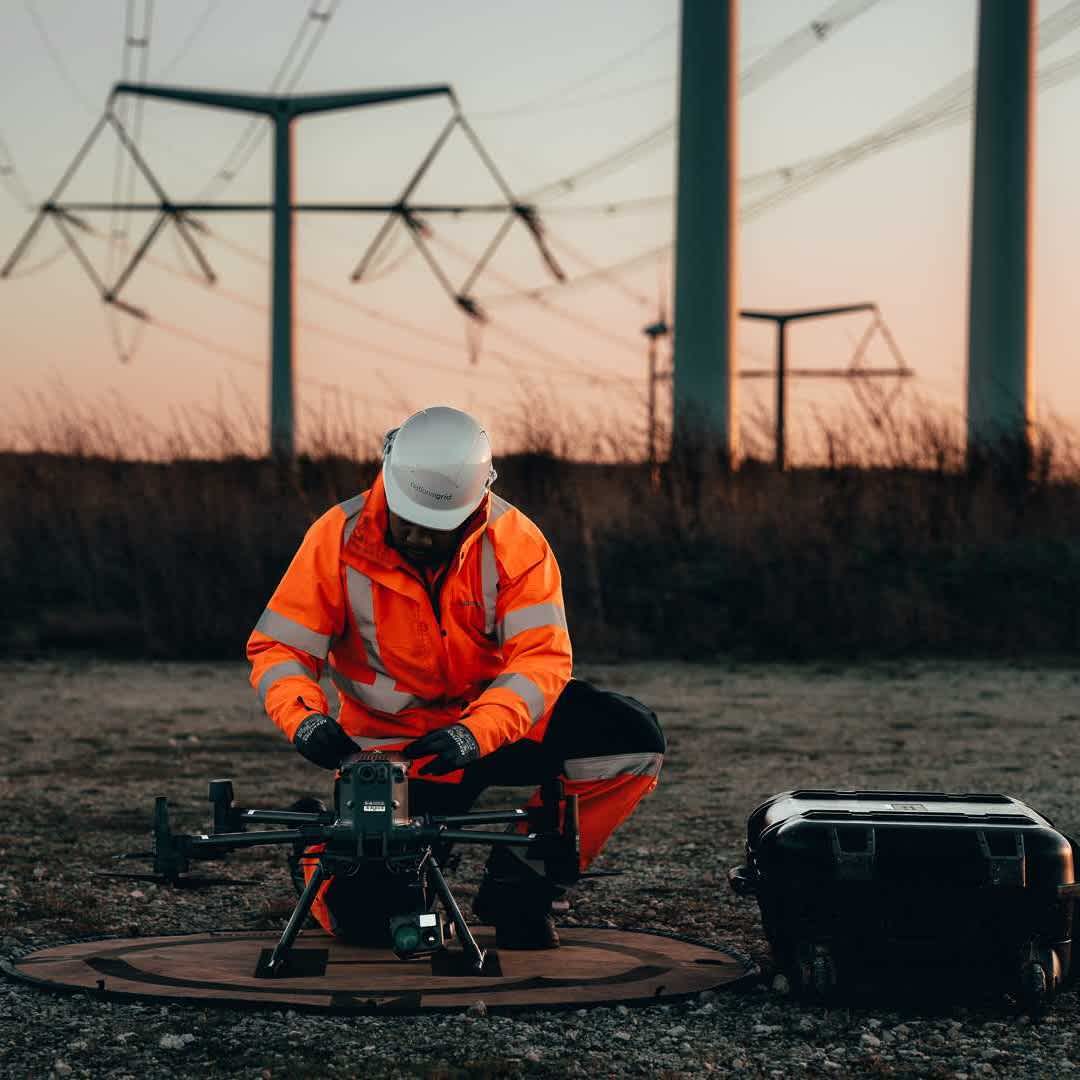Drones For Inspection
Revolutionising Asset Management: Drones Elevate Increased Inspection Efficiency And Safety
Protect The Integrity Of Your Critical Infrastructure
Real-time insights for data-driven decision-making
Reduce Risk
Drones reach otherwise inaccessible locations and remove the need to work at height or enter hazardous areas.
Eliminate Downtime
Keep assets open and running during efficient inspections and spot defects sooner with more frequent checks.
High-fidelity Data
Automated flights collect accurate and repeatable data for robust predictive maintenance and repair schedules..
Drones: A Game-changer For Inspection
Smarter asset maintenance and repair
Better protect the health of your assets with a drone inspection.
Conduct safer, faster, and more cost-effective condition assessments and reach places that are difficult, dangerous, live, or impossible to access by manned teams.
Eliminate costly downtime and spot problems earlier with more frequent aerial inspections.
Obtain precise data in real-time and automate missions for repeatable and consistent insights. Or integrate drone-in-a-box solutions for round-the-clock, on-demand data collection.
Drone data can be combined with AI technology for automatic defect detection, predictive maintenance analysis, and asset management optimisation.
Inspection drones benefit industries such as utilities, critical infrastructure, public safety, and mining.
Leverage the support from heliguy™ to help start and scale your drone inspection operations.

Visual Drone Inspections
Detailed asset assessment
A visual survey is a thorough visual assessment of an asset, whether it be a powerline, wind turbine, or a building. Obtain high-resolution imagery and video and engage powerful zoom cameras for a detailed up-close perspective to spot defects, monitor conditions, and inform maintenance schedules with precision - all with your feet firmly on the ground.

Thermal Drone Inspection
See beyond the human eye
A drone with a thermal camera can detect and highlight problems that may be missed during a visual inspection. Use thermal imagery to spot moisture intrusion, energy loss, electrical failures, pipeline leaks, and component defects, and to observe wildlife. Thermal inspections benefit AEC, oil and gas, infrastructure, and wildlife conservation.

Gas Detection
Safe and efficient HazMat response
Deploy drones with gas detection systems to safely and efficiently monitor hazardous substances. Assess the scene from a safe distance; quickly locate chemical hazards in real-time; and build maps and models to improve decision-making and better coordinate multi-agency response. Use gas detection drones for HazMat response, public safety, industrial inspection, and environmental monitoring.

Confined Inspection Drones
Remote access in difficult-to-locate areas
Confined space inspection has traditionally been a risky and laborious task. But drones are a remote inspection tool to access dangerous and difficult-to-reach locations, removing the need to send people into hazardous and highly-complex areas. Confined space inspection drones benefit industries such as oil and gas, utilities, and mining.

Supported by industry leading solutions
Our equipment, expertise, and support will ensure success for your undertaking
Frequently Asked Questions
What is drone inspection?

What are the advantages of using drones for inspection?

Which industries benefit from drone inspections?

What do I need to consider when choosing an inspection drone?

What are the best drones for inspection?

Do I need training to conduct a drone inspection?

What are the future trends in drone inspection technology?






















